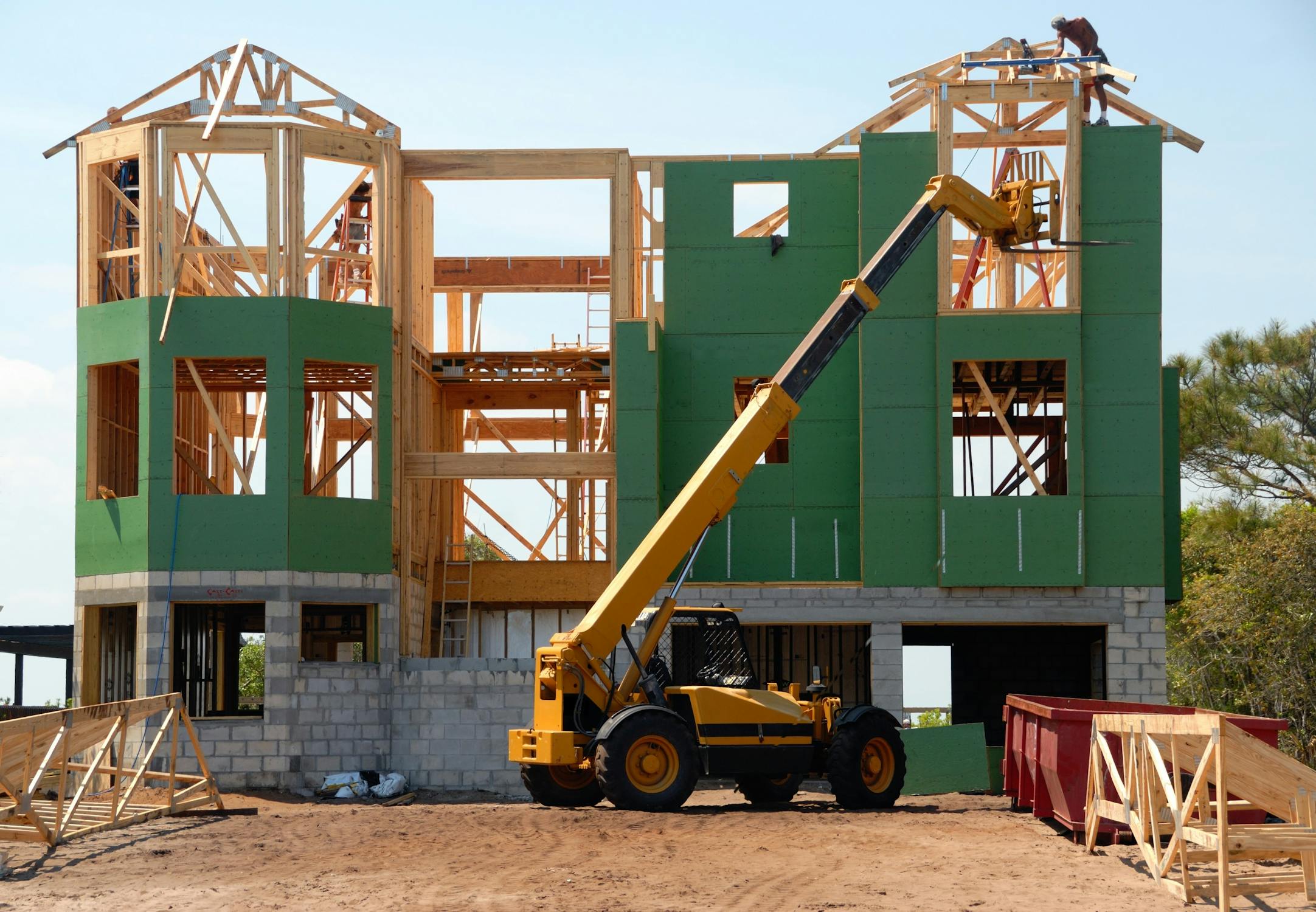
Innovative Sustainable Building Materials for Eco Homes
Building an eco-friendly home is an investment not only in sustainable development but also in reducing greenhouse gas emissions and creating a healthier living environment. Eco-conscious homeowners are increasingly opting for sustainable building materials that lower energy consumption, improve indoor air quality, and reduce waste. This article explores what qualifies as sustainable building materials, their advantages, leading examples, guidance for making informed decisions, practical implementation in home design, and future innovations. The discussion incorporates fundamental principles, environmental certifications, and energy efficiency benefits to support a built environment that is resilient and environmentally friendly.
Key Takeaways
Sustainable materials are selected based on life cycle assessments, local sourcing, and certifications.
They reduce environmental impacts, enhance indoor air quality, and offer long-term cost savings.
Leading examples include reclaimed wood, bamboo, and recycled steel.
Practical guidance includes assessing material suitability and working with green builders.
Future innovations focus on bio-based, smart, and carbon-neutral materials.
What Qualifies as Sustainable Building Materials for Eco-Friendly Homes

Sustainable building materials minimize environmental impact through reduced resource consumption, low greenhouse gas emissions, and minimal adverse effects on human health.
Core Principles of Sustainable Material Selection
The selection of sustainable materials revolves around reducing the overall carbon footprint and preserving natural resources. These materials are chosen through responsible production processes that promote renewable energy use, efficient water use, and lower waste generation. Eco-friendly building products often come with certifications that verify their low-impact production, ensuring they contribute positively to environmental protection.
Understanding Life Cycle Assessments for Materials
A life cycle assessment (LCA) evaluates the environmental impacts of a material from extraction to disposal. This holistic approach accounts for energy consumption, waste generation, and carbon emissions, helping homeowners choose materials that offer lower net impacts. LCAs provide quantifiable metrics that are critical for comparing products such as engineered wood versus traditional concrete.
Recognizing Green Certifications and Labels
Green certifications—such as LEED, Energy Star, and Cradle-to-Cradle—verify that materials meet rigorous sustainability criteria. These certifications play a crucial role in ensuring that the materials used in construction are manufactured with environmental protection as a priority. Homebuyers are encouraged to look for these labels when selecting building products.
The Role of Locally Sourced Materials in Sustainability
Using locally sourced materials reduces transportation emissions and supports the local economy. Incorporating regional resources also ensures that the building materials are suited to the local climate, thereby increasing the energy efficiency and resilience of the home.
Differentiating Between Natural and Recycled Sustainable Options
Both natural and recycled materials offer environmental benefits. Natural materials like bamboo and cork are renewable, while recycled products, such as reclaimed wood and recycled steel, reduce waste and demand on new raw materials. The balance between these choices depends on availability, cost, and design requirements.
Advantages of Choosing Sustainable Building Materials

Sustainable building materials offer many advantages that extend beyond environmental benefits. Homeowners can enjoy lower operating costs, improved indoor comfort, and a positive impact on the community and natural environment.
Reducing Environmental Impact Through Material Choices
Choosing eco-friendly products reduces the overall carbon footprint by lowering greenhouse gas emissions and conserving natural resources. For instance, sustainable materials often require less energy to produce, which directly translates to fewer emissions and helps mitigate climate change.
Improving Indoor Air Quality With Non-Toxic Materials
Non-toxic building materials contribute significantly to healthy indoor air quality. This is achieved by eliminating harmful chemicals and volatile organic compounds (VOCs) found in many conventional building products. A home built with sustainable materials can lead to better occupant health and increased overall satisfaction.
Achieving Long-Term Cost Savings With Durable Green Products
While the initial investment may be higher, sustainable building materials tend to last longer and require less maintenance. Over time, this durability results in significant cost savings, making them a fiscally responsible option for homeowners who are planning for the long term.
Enhancing Home Energy Efficiency With Smart Material Use
Materials that provide superior insulation and energy efficiency lead to lower utility bills and reduced energy consumption. Smart design choices, such as ENERGY STAR-certified windows and high-performance insulation, create a comfortable home environment while also being kind to the planet.
Contributing to Resource Conservation and Waste Reduction
Sustainable construction practices prioritize the reuse and recycling of materials, reducing the burden on landfills and conserving resources. By choosing materials with a low environmental impact, homeowners help foster a circular economy that values reuse and waste reduction.
Leading Examples of Sustainable Building Materials
Several building materials have become leading examples of sustainability due to their environmental benefits, durability, and versatility in design.
Reclaimed Wood and Its Applications in Green Homes
Reclaimed wood is wood salvaged from old buildings or furniture that can be repurposed for new construction. It not only adds character and warmth to a home but also reduces the need for new lumber harvests, conserving forests and reducing waste.
Bamboo as a Rapidly Renewable Building Resource
Bamboo is known for its rapid growth and high strength-to-weight ratio, making it an ideal material for sustainable construction. It is renewable, requires little water, and has been used effectively in both structural and decorative applications within eco-friendly homes.
Cork Flooring and Insulation Benefits
Cork is harvested from the bark of cork oak trees without harming the tree itself, making it a renewable resource. Its natural insulation properties improve energy efficiency and provide sound insulation, creating a quieter, more comfortable home interior.
Recycled Steel for Structural Integrity and Low Impact
Recycled steel is reused from old structures and manufactured products, reducing the need for virgin material extraction. It provides exceptional structural strength and durability, minimizing the environmental impact associated with new steel production.
Earth-Based Materials Like Rammed Earth and Adobe
Earth-based construction methods, such as rammed earth and adobe, utilize natural soils that provide excellent thermal mass and energy efficiency. These materials are locally available, sustainable, and contribute to a healthy living environment by regulating indoor temperatures naturally.
Your Sustainable Building Materials Guidance for Informed Decisions

Making informed choices about sustainable materials requires understanding the various factors influencing their use, from climate relevance to supplier reputability.
Assessing Material Suitability for Your Climate and Design
When selecting materials, homeowners must consider local climate conditions and architectural design. Materials that thrive in dry climates may not be suitable for humid regions, and vice versa. Evaluating the local weather pattern and integrating energy-efficient solutions ensures a more resilient and efficient home.
Finding Reputable Suppliers of Eco-Friendly Materials
Working with established suppliers specializing in sustainable products ensures access to high-quality materials. Reputable vendors often have verifiable certifications and transparent supply chains, which are critical for confirming that the materials meet sustainable standards.
Budgeting for Sustainable Construction Projects
While sustainable materials may carry a premium, proper budgeting and long-term financial planning can help offset higher upfront costs. Homeowners should allocate resources for these investments by considering potential energy savings and lower maintenance costs, ultimately improving the overall value of the home.
Working With Builders Experienced in Green Materials
Partnering with builders with a proven track record in green construction can greatly enhance the success of a project. Experienced builders are adept at integrating innovative solutions and can offer tailored guidance that harmonizes sustainability with design aesthetics.
Reviewing Product Transparency and Sourcing Information
Before committing to a material, it is crucial to review detailed product information and sourcing transparency. This practice helps validate the environmental claims and ensures that materials contribute to a reduced carbon footprint and sustainable consumption.
Implementing Sustainable Materials in Your Eco-Conscious Home Design

Integrating green materials into every component of a home design ensures holistic sustainability. From the foundation to the landscaping, every choice can contribute to reduced environmental impact and better indoor comfort.
Sustainable Options for Foundations and Structural Elements
Foundations built with eco-friendly concrete alternatives or recycled steel are key to constructing a resilient home. These options reduce the energy intensity typically associated with traditional foundations, thus lowering the overall carbon footprint.
Green Choices for Insulation and Weatherization
Effective insulation, such as recycled denim or sheep’s wool, improves energy efficiency and decreases heating and cooling demands. These choices work hand-in-hand with sustainable design to create an efficient barrier between indoor and outdoor environments.
Eco-Friendly Interior Finishes: Walls, Floors and Ceilings
Interior surfaces made from natural, low-VOC materials like bamboo flooring or natural plaster contribute to healthier indoor air. These finishes reflect sustainable design principles and ensure that the interior environment is safe and comfortable for its occupants.
Sustainable Materials for Exterior Siding and Roofing
Exterior claddings made from recycled metal, fiber cement, or sustainably harvested wood offer durable and weather-resistant options. These materials resist environmental degradation while reducing the embodied energy of construction projects.
Water-Wise Landscaping Materials and Permeable Surfaces
Landscaping that utilizes permeable pavements and reclaimed vegetation enhances stormwater management and minimizes runoff. Such practices protect local water resources, reduce flood risks, and create a more sustainable built environment.
Future Directions and Innovations in Green Building Materials

The future of sustainable building materials promises exciting advancements that will further promote eco-friendly construction practices. Innovations in material science and renewed policy support are driving the transition to a more sustainable construction industry.
Advancements in Bio-Based Material Technology
Innovations in bio-based materials are continuously emerging, providing alternatives that are both renewable and biodegradable. These advancements are pivotal in reducing dependency on fossil fuels and minimizing the embodied carbon in building materials.
The Rise of Smart Materials for Energy Management
Smart materials that adjust to environmental conditions are gaining traction for optimizing energy consumption. For example, self-healing concrete and thermochromic coatings can respond to temperature changes, contributing further to energy efficiency in homes.
Circular Economy Principles in Construction Materials
Adopting circular economy principles ensures that materials are reused and recycled continuously. This approach not only reduces landfill waste but also promotes resource conservation by closing the material loop in construction practices.
Growing Focus on Carbon-Neutral Building Products
Carbon-neutral building products, produced with renewable energy sources, are becoming more prevalent. These materials contribute to reducing the overall carbon footprint of a construction project and align with global sustainability goals.
Policy and Incentives Supporting Sustainable Material Use
Government policies and incentives are increasingly driving adoption of green building materials. Subsidies, tax incentives, and strict regulatory standards support the shift toward sustainable alternatives, making eco-friendly construction financially viable for homeowners.
Final Thoughts
Building an eco-friendly home requires thoughtful selection of building materials that are both sustainable and effective. Sustainable materials not only reduce environmental impact and improve indoor air quality but also offer long-term economic benefits. Homeowners are encouraged to work with reputable suppliers and experienced builders to ensure that their projects meet high standards of sustainability. Looking ahead, continuous innovations in material technology promise even greater efficiencies and environmental benefits in the future.
Frequently Asked Questions
Q: What makes a building material sustainable?
A: A sustainable building material minimizes environmental impact, reduces resource consumption, lowers greenhouse gas emissions, and maintains a low carbon footprint throughout its life cycle.
Q: How do green certifications help in material selection?
A: Certifications like LEED and Energy Star ensure materials meet strict environmental standards, which helps homebuyers choose products that support sustainable construction and energy efficiency.
Q: Can sustainable materials reduce overall costs in home building?
A: Yes, while initial costs may be higher, sustainable materials often require less maintenance and lower energy consumption, resulting in long-term savings.
Q: How is indoor air quality improved with eco-friendly materials?
A: Non-toxic materials emit fewer harmful chemicals and VOCs, promoting a healthier indoor environment for occupants.
Q: What future innovations can we expect in green building materials?
A: Advancements in bio-based technologies, smart materials, and carbon-neutral products are expected to drive further improvements in energy efficiency and reduce environmental impacts.


